Last Updated on December 5, 2025 by Emma Fajcz | Published: November 28, 2018
Wondering what to eat in Lisbon? From breakfast to dinner, we’re laying it all out there so you can eat like a true local, with its own tastes and traditions.
No trip to Lisbon is complete without a taste of the local cuisine. Of course you need to try codfish and pastel de nata, but there are many other delicacies you can’t miss, too.
Have you ever heard of Polvo à Lagareiro? What about caldo verde? Keep reading, and we’ll tell you everything you need to know about what to eat in Lisbon!
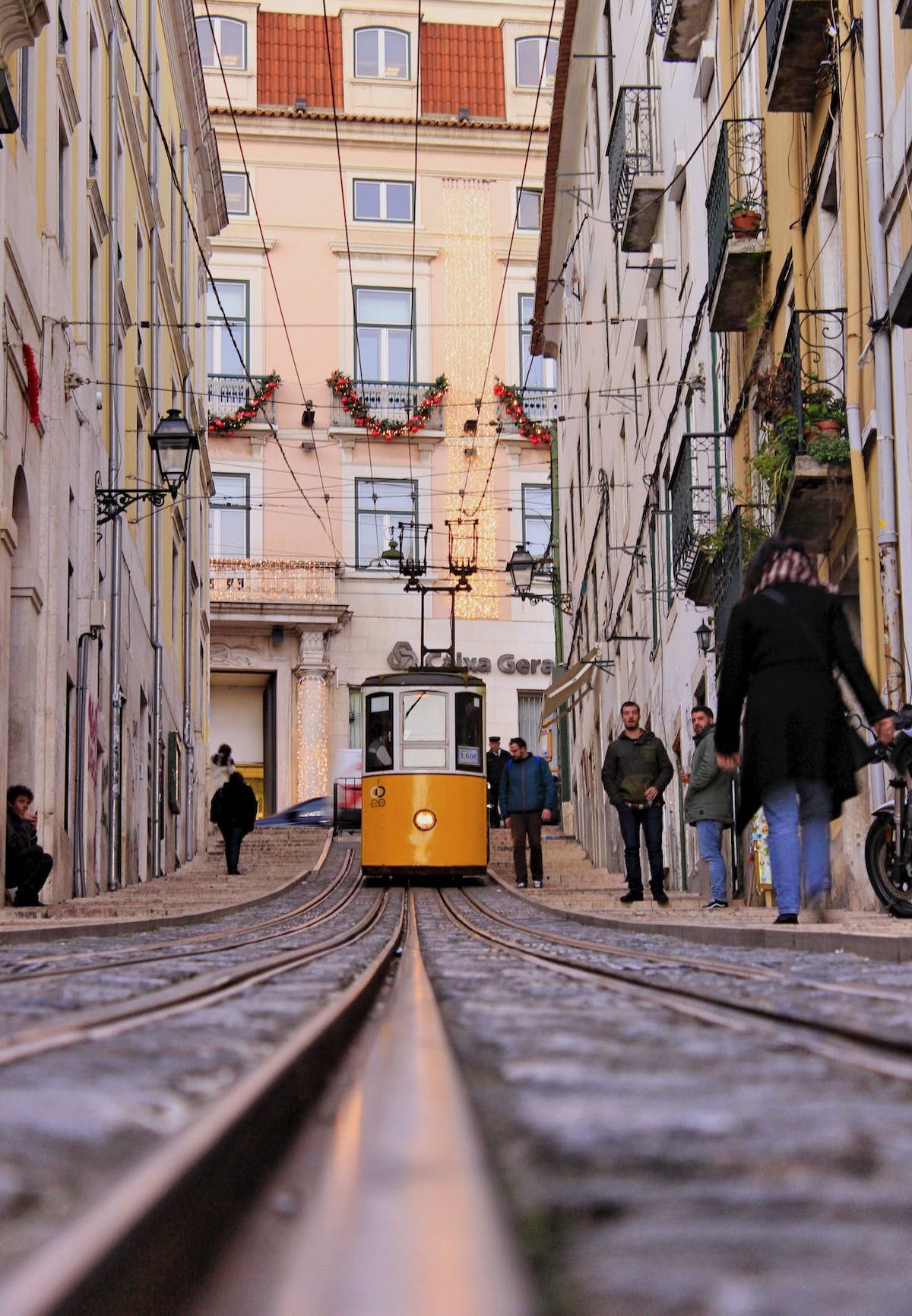
What to eat in Lisbon
Cod
If there’s one staple of Portuguese cuisine, it’s the bacalhau (codfish). Here in Portugal, we’re very proud of “our” salted cod, but honestly, it’s not even from here. Most of it comes from Norway! Even so, with more than 365 recipes under our belt, it’s safe to say we made it our own. Here’s a brief overview of what you should know:
- Every region has its bacalhau. The most popular one in Lisbon is the Bacalhau à Bràs, flaked cod with scrambled eggs, potatoes, parsley, and black olives. You can try a refined version at the Casa do Bacalhau.
- Meia-desfeita is also typical from Lisbon. The dish combines shredded cod with chickpeas, boiled egg, and parsley. It’s usually served cold, but you can also have it hot. We like the one from Taberna da Rua das Flores.
- For a smaller treat, try the pastéis de bacalhau (codfish cakes) or the pataniscas de bacalhau (codfish fritters). They’re quite similar in taste—the only difference is that the pastéis include potatoes in the batter.
- You can eat them on their own as a snack, or as a main with arroz de feijão (bean rice) or arroz de tomate (tomato rice). Most cafés will have pastéis de bacalhau. For pataniscas, we recommend going to D’Bacalhau.
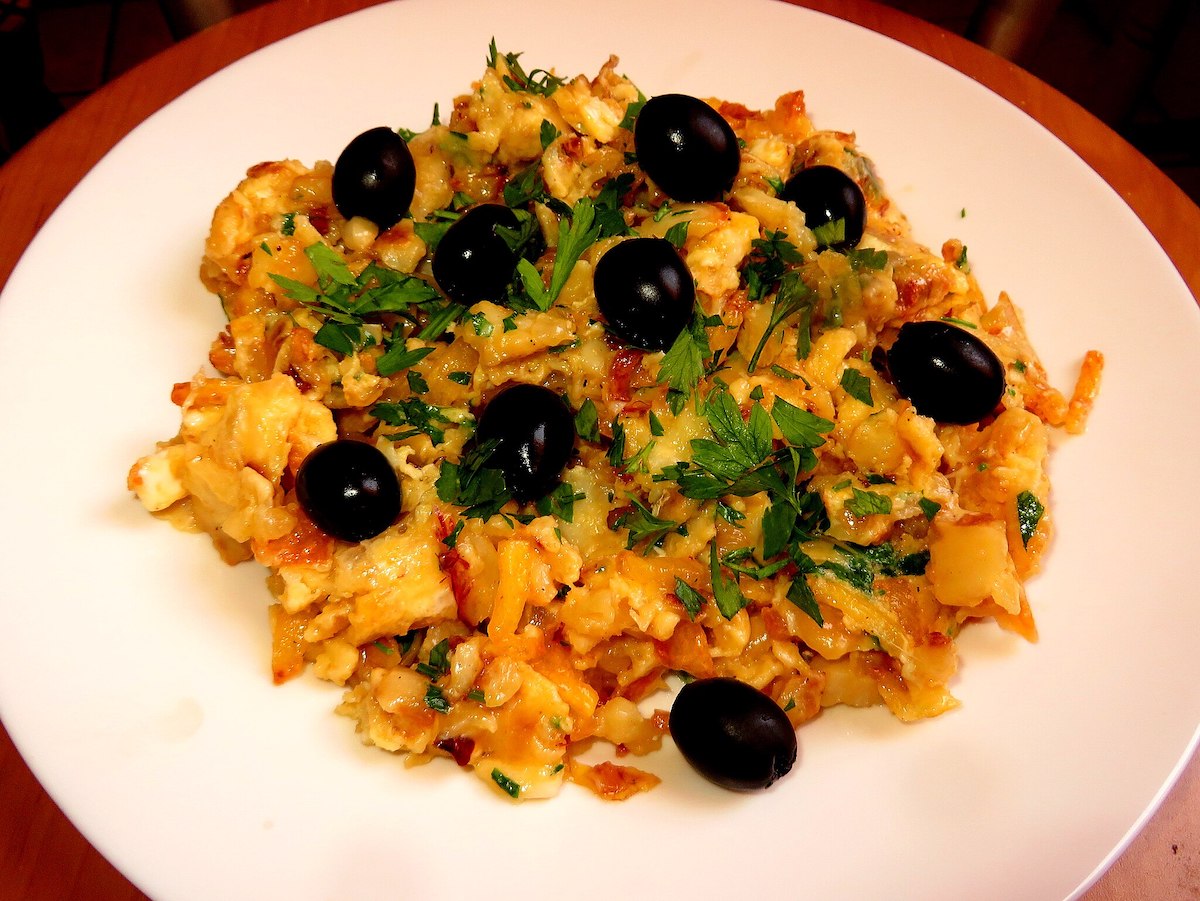
Grilled sardines
Some things remind you of summer: music festivals, the beach, barbecues, you name it. In Portugal, it’s the smell of grilled sardines.
Sardines are one of the most traditional bites in Lisbon. In June, they’re the highlight of Santos Populares, a festival that celebrates Lisbon’s patron saint. For a month, families set up grills at their doorstep and locals flock to the streets for a taste of sardines. Some like to eat them with potatoes and salad, while others prefer the simple combination of the fish with bread.
Insider’s Tip: Restaurants advertise sardines all year round, but don’t fall for that trap! The best time to order sardines is between June and October. If you get them out of season, odds are they were frozen.
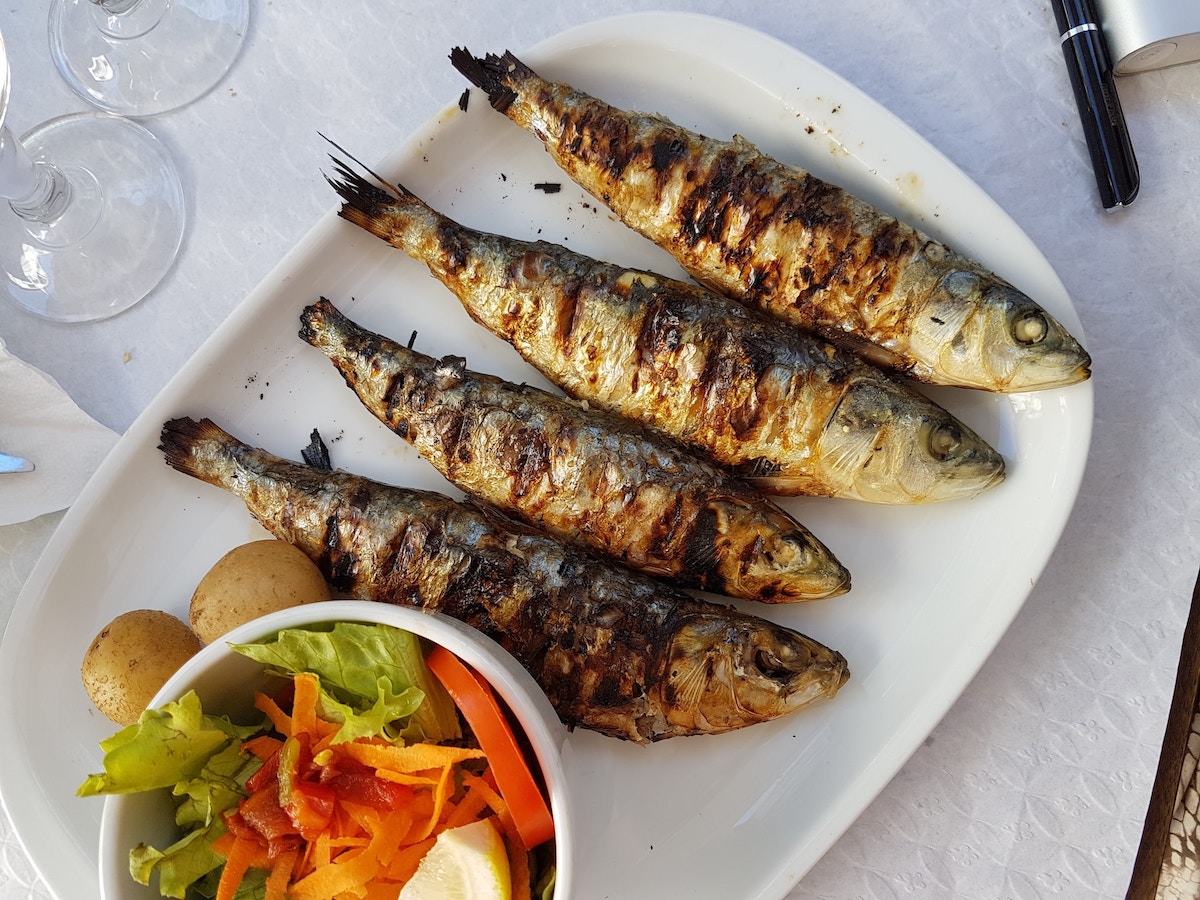
Ameijòas à Bulhão Pato
In Portugal, any dish with a sauce calls for a bit of bread (to dip it in, of course). Ameijôas à Bulhão Pato is no exception. This clam dish gets its name from the Portuguese writer Raimundo António de Bulhão Pato, and it’s one of the best petiscos in Lisbon.
The clams are usually served in a pot and mixed with garlic, olive oil, white wine and lemon juice. This sauce is so good that some restaurants even started adding it to other seafood dishes like codfish or sea bass.
You can find Ameijôas à Bulhão Pato in most seafood restaurants, but one of our favorites is from Cervejaria Ramiro.
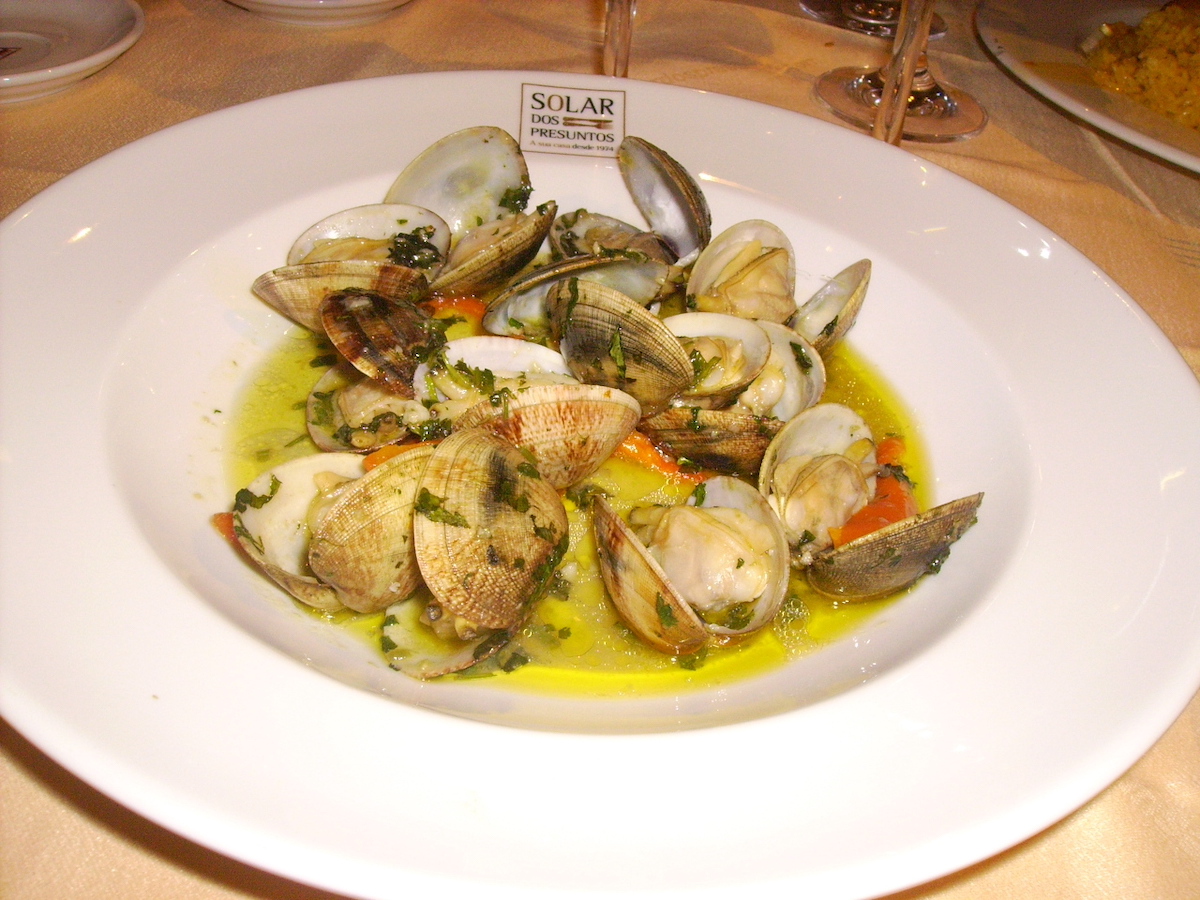
Polvo à Lagareiro
First came the Bacalhau à Lagareiro, made with cod, and then the octopus version was born: Polvo à Lagareiro. The main ingredient is different, but there’s one thing these dishes have in common: lots and lots of olive oil.
In Portuguese, lagareiros are the people that work in olive oil production, hence why we say à lagareiro. To keep it short, we boil the octopus, grill it and then drizzle it with a generous amount of olive oil and garlic.
The dish is usually served with batatas a murro, which translates to “punched potatoes.” Yes, you read that right—we punch the potatoes before you eat them. Sounds odd, but they’re delicious!
You can order Polvo à Lagareiro at Frade dos Mares (Av. Dom Carlos I 55A, 1200-647) or inside the Time Out Market at Marlene Vieira’s stall.
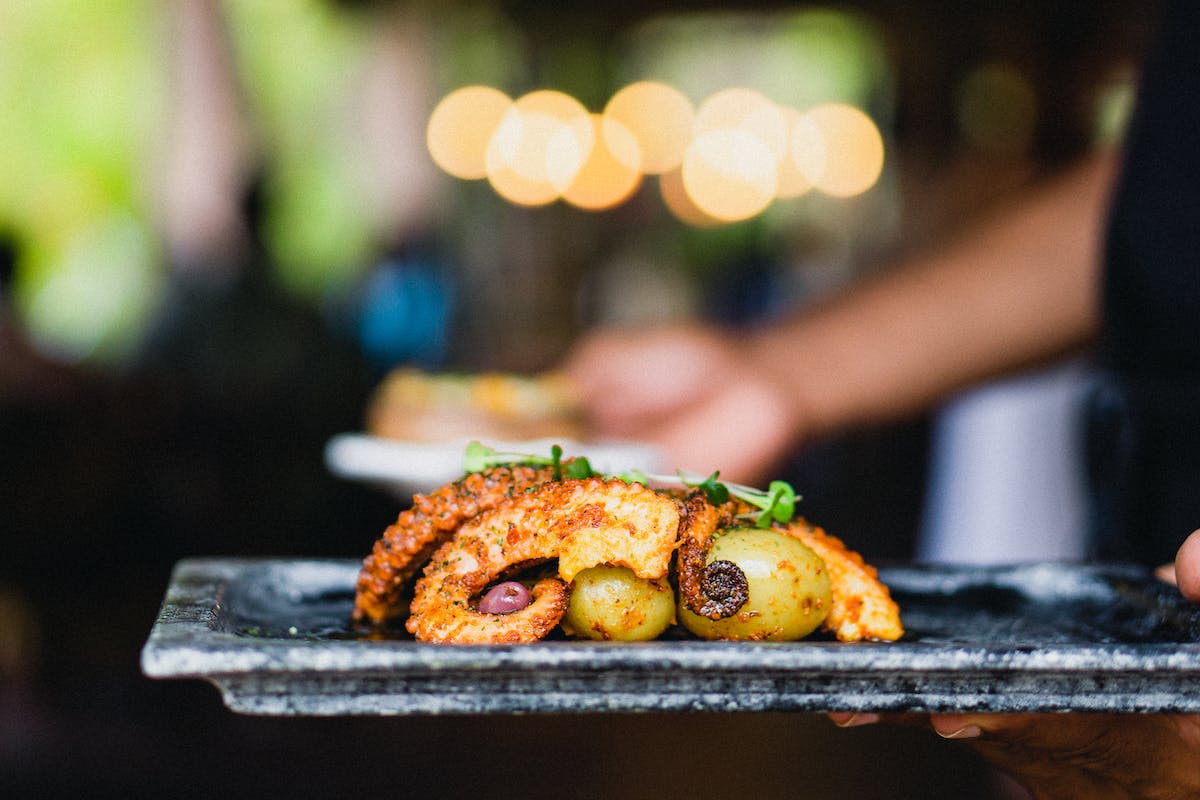
Cozido à Portuguesa
We’re not going to lie: cozido à Portuguesa won’t win any awards for the best-looking dish. This traditional stew is heavy on meat, and when we say meat, we mean all of it: pork, chicken and beef. But if you’re thinking about what to eat in Lisbon during a cold, rainy winter day, here’s your winner.
But that’s not all! It also includes plenty of sausages and a mix of vegetables like boiled potatoes, carrots, cabbage and turnips. Alongside cozido à Portuguesa, you can often find sopa de cozido, a soup made with pasta and the stew’s broth.
Many restaurants in Lisbon have a day devoted to this dish. We recommend the all-you-can-eat buffet at Rosa da Rua (R. da Rosa 265, 1200-385).

Meat sandwiches: Prego & bifana
If you don’t fancy a big meal, but still want to eat traditional Portuguese food, prego (acbeef sandwich) and bifana (a pork sandwich) are the way to go.
These two local sandwiches might be simple, but they’re packed with flavor. The best bifana always comes with lots of garlic, and the prego is all about the sauces, like mustard or piri-piri. You can also order prego no prato (on a plate) and get some fries instead.
We love the bifanas of Café Beira Gare (Praça Dom João da Câmara 4, 1200-090) and can’t get enough of the pregos at Rui dos Pregos (R. da Junqueira 508 510, 1300-341). Whichever you choose, don’t forget to order a cold imperial (small beer) to go with it —that’s how the locals do it!
If you’re sightseeing in Lisbon and all that walking makes you hungry, it’s just the perfect bite to have, so keep some of those traditional places in mind for your itinerary.
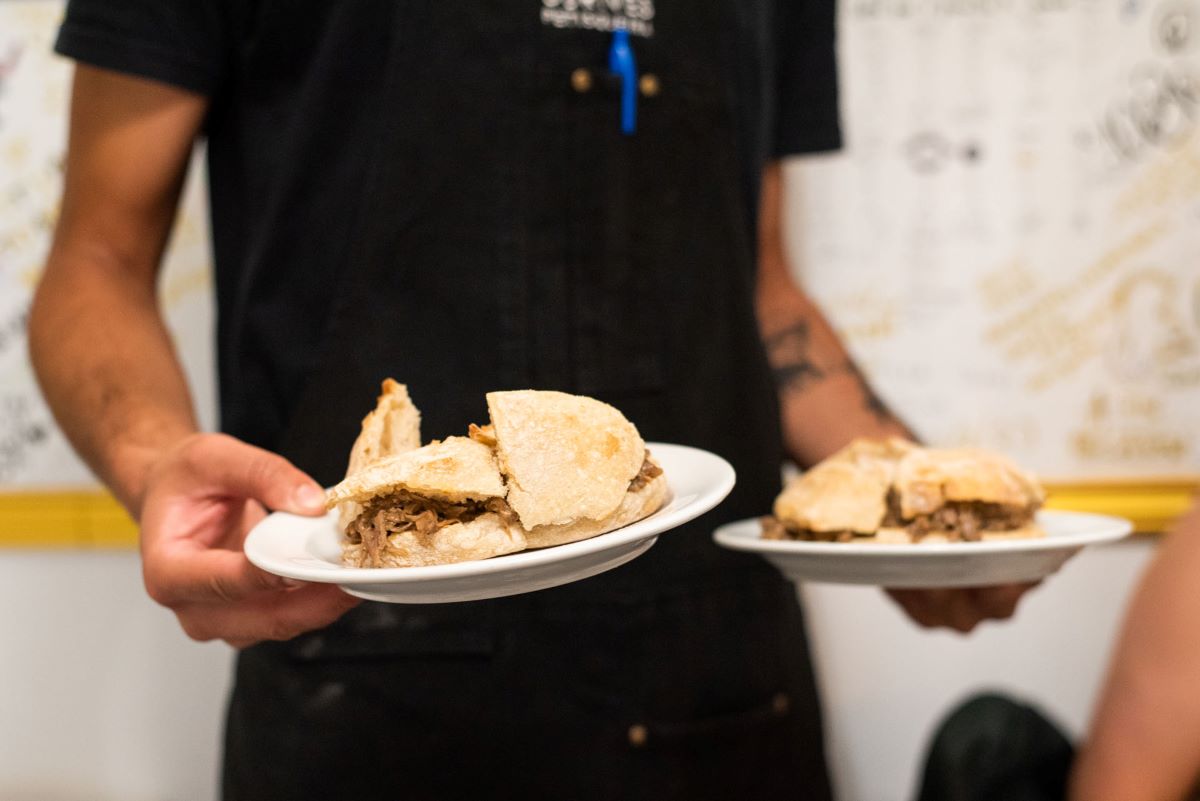
Peixinhos da horta
It’s normal to ask yourself what to eat in Lisbon as a vegetarian. Let’s face it, there isn’t a huge variety of vegetarian food in Lisbon (or really, all of Portugal)—but those that we do have are delicious.
If there’s one thing vegetarians should try in Lisbon, it’s peixinhos da horta. The name translates to “little fish from the garden.” They’re given this funny name because of their resemblance to green beans. Like any other Portuguese petisco, they’re made to share. If you want to try some, head over to Tapa Bucho (R. do Diário de Notícias 124, 1200-141) or Café do Paço (Paço da Rainha 62, 1150-000).
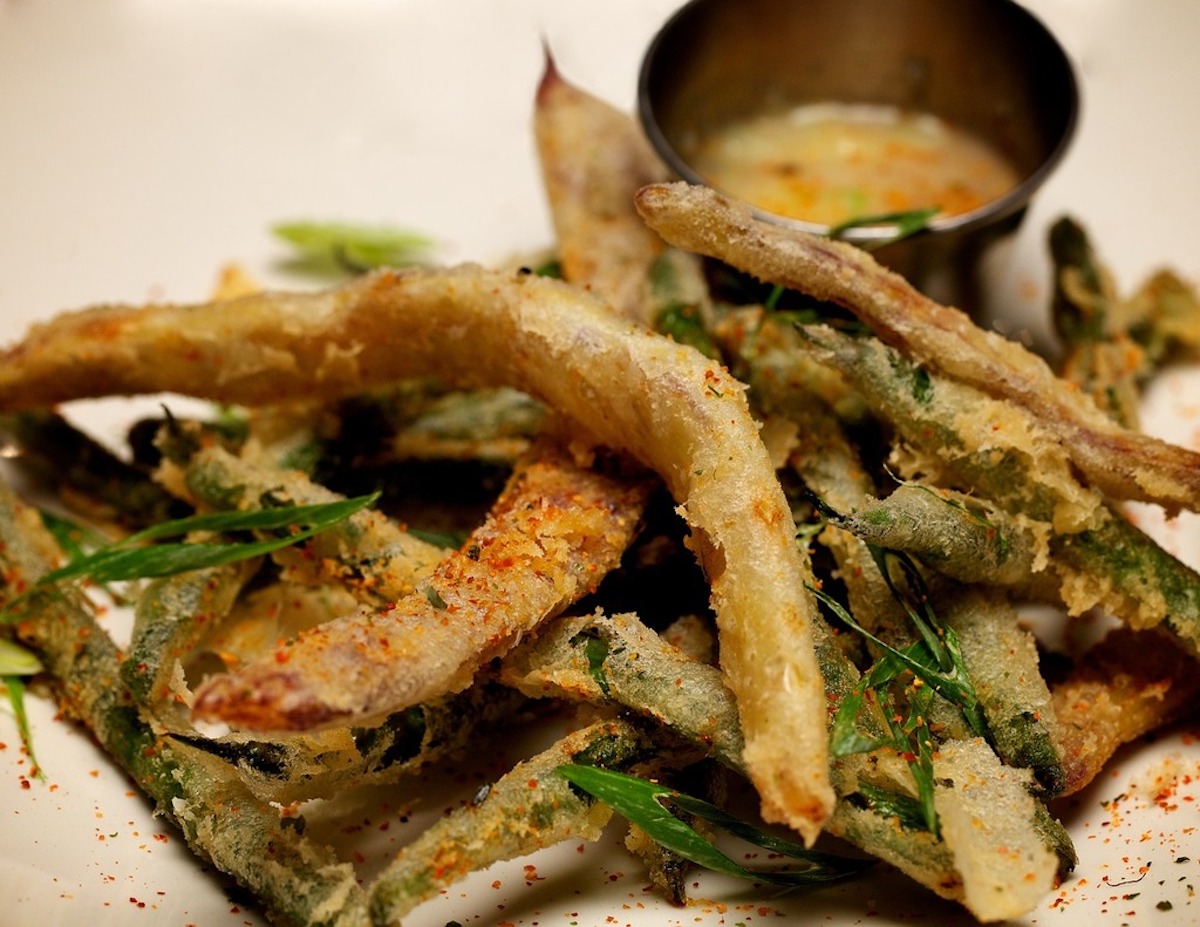
Caldo verde
Soups are a regular part of the Portuguese diet, but caldo verde is the most popular one of all.
The main ingredients of this soup are kale and pureed potatoes. Sometimes it comes with bits of chorizo on top, but when it doesn’t, it makes for a great vegetarian dish as well.
Forget fast-food chains. At the start of a meal or as a midnight snack, there’s always room for caldo verde. If you go for a night out in Lisbon, you’ll probably end up at Merendeira chatting with locals and eating caldo verde with pão com chouriço (chorizo bread) afterwards.
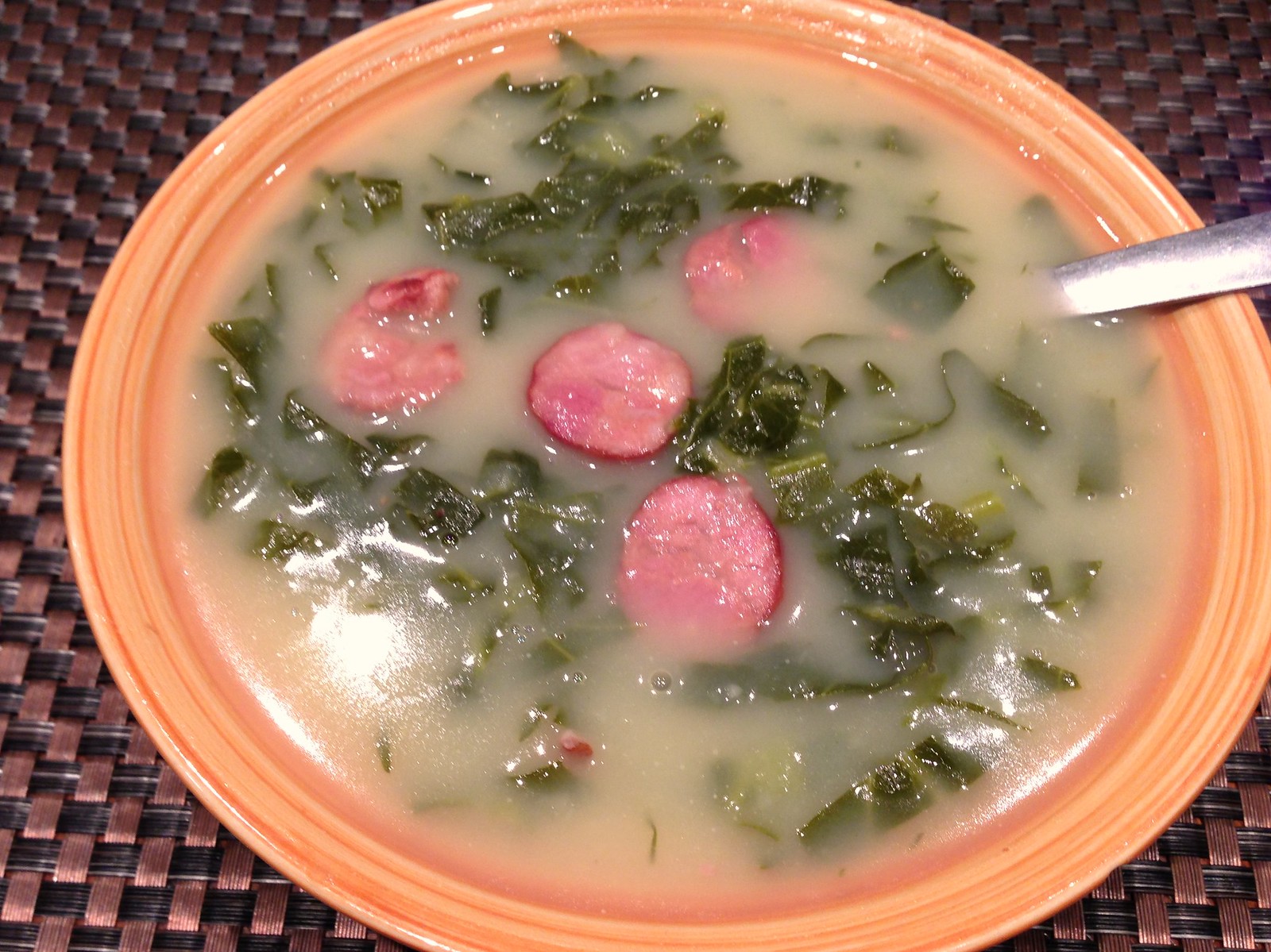
Pastel de nata
Start or end the day with a pastel de nata (or pastel de Belém) and you’ll make us proud.
There are many delicious pastries throughout Portugal, but in Lisbon, all eyes are on the pastel de nata—the Portuguese custard tart. Egg yolks, milk and sugar are all it takes to make this sweet bite.
For some they’re a regular snack to go with espresso, for others they’re a luxurious treat. It doesn’t matter how often you eat them though, it’s where you get them from. Ask any local, and they’ll tell you their favorite spot for pastel de nata. Here at Devour Lisbon, we always get them at Manteigaria, but there’s nothing like trying them yourself to find your own favorite spot.
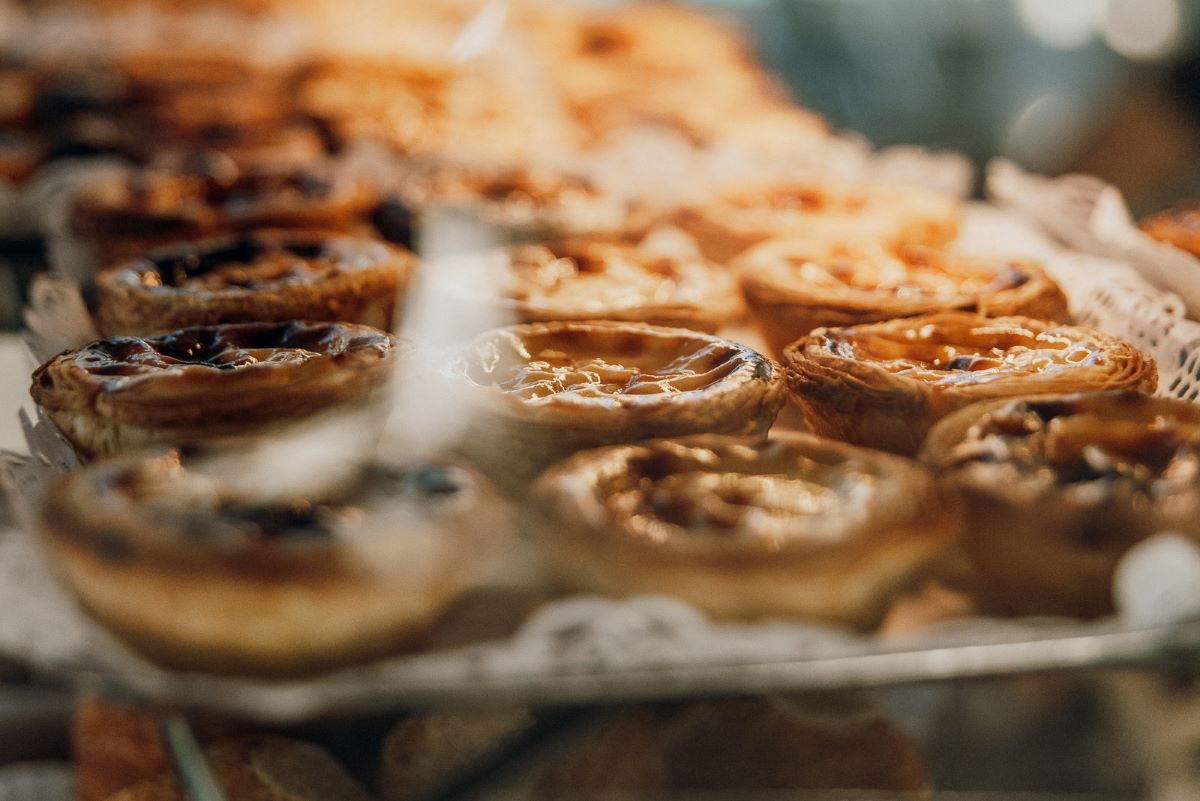
What to eat in Lisbon at different times of the day
Traditional breakfast
Wondering what to eat in Lisbon for breakfast? Asking yourself what a traditional breakfast in Lisbon looks like? It all starts with the coffee. We’ve already covered the endless ways of ordering coffee in Portugal, but the most popular ones for breakfast are the galão (¼ coffee, ¾ milk) and the meia de leite (½ coffee, ½ milk). When it comes to food, we’re not big on sausages and beans. Instead, we turn to pastries (yes, pastéis de nata are acceptable for breakfast) and toasted bread, like the tosta mista (ham & cheese toast).
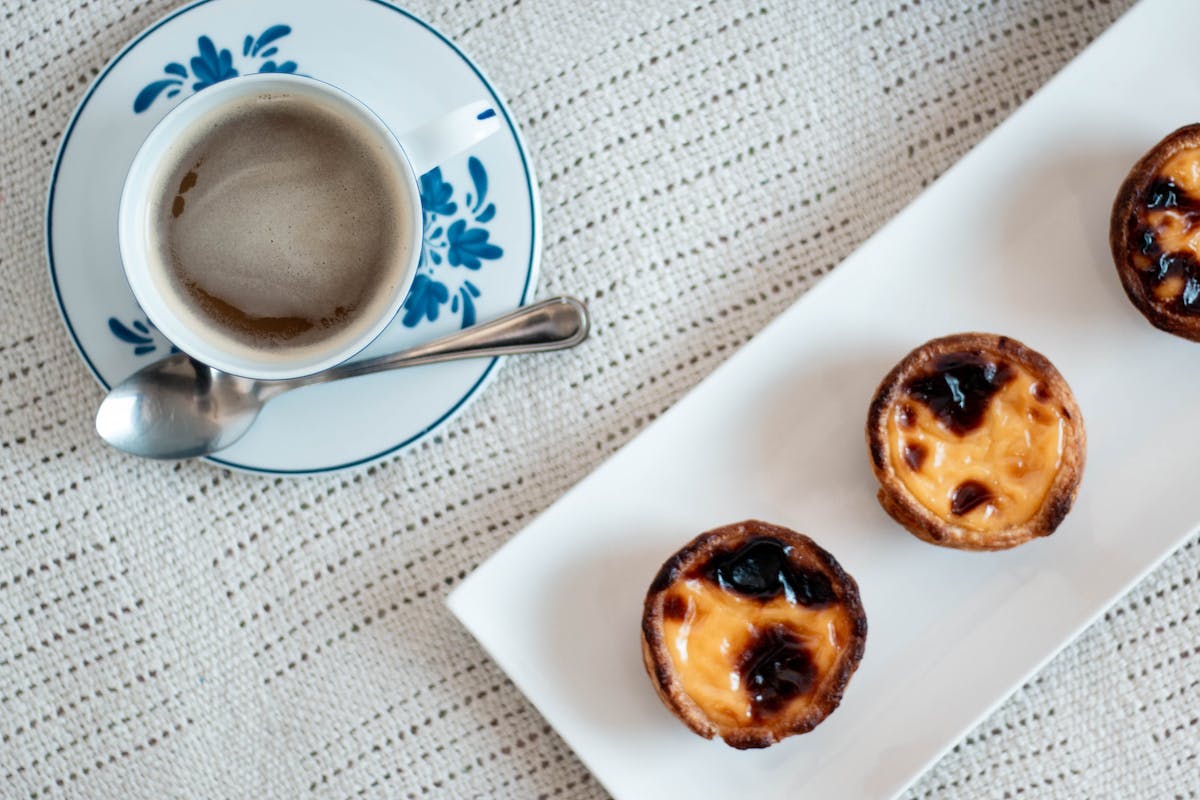
Lunch & dinner
Locals spend most of their day at work, which doesn’t leave many options for lunch.
We’ll either bring food from home, or take advantage of Lisbon’s cheap eats like prato do dia (lunch deals that usually include soup, a main dish, dessert and coffee).
For dinner, the focus is on the petiscos, small dishes that are perfect to share with friends. Some of our favorites include the salada de polvo (octopus salad) and the pica-pau (little meat chunks).
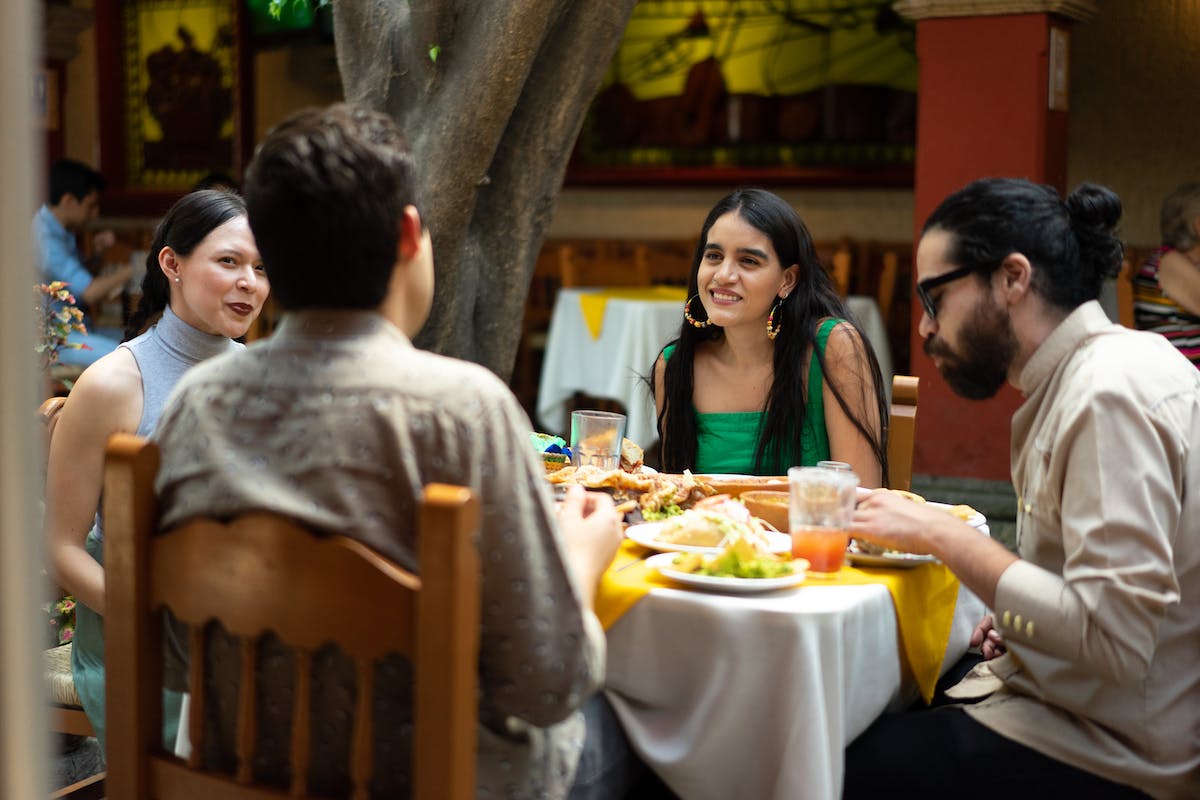
Local street food
Prego and bifana are not the only street food in Lisbon. There’s even more delicious options to devour.
We love a good pão com chouriço straight off the oven and don’t get us started on the salgados (savory treats). Our favorite salgado is the pastel de bacalhau (codfish cake), and you can get one for very cheap at any padaria Portuguesa.
Unless there’s a food festival in town, you’re not likely to find many food trucks in Lisbon. That’s because most of the street food is served in the local cafés or outdoor kiosks.
Chouriço assado is a strong and delicious dish you can eat on a plate or with bread in the famous pão com chouriço.
There’s a lot more where that came from—check out our Tastes & Traditions of Lisbon Tour for a complete morning full of traditional Portuguese bites. The best part: we try them all at authentic spots locals love—no tourist traps here!
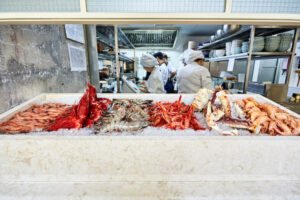

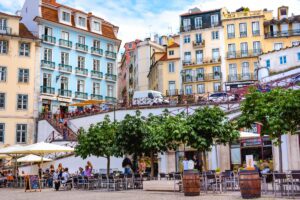






Love your articles. keep going!!